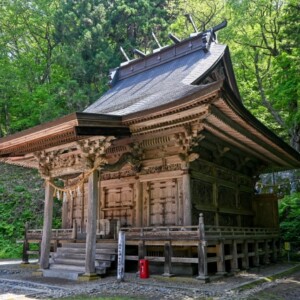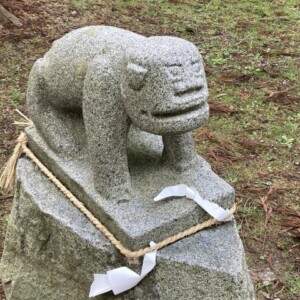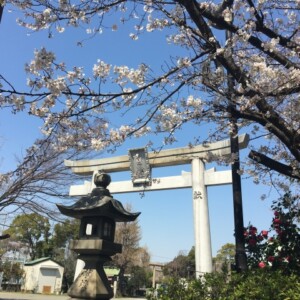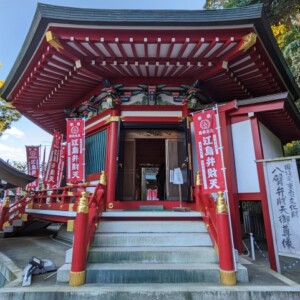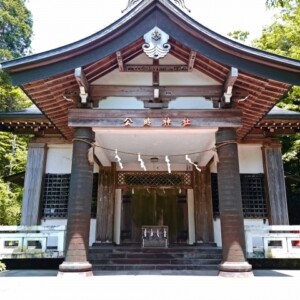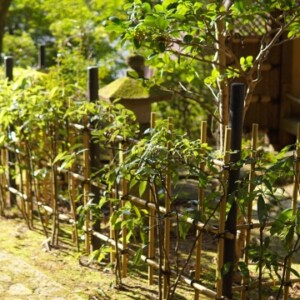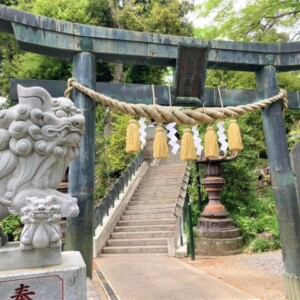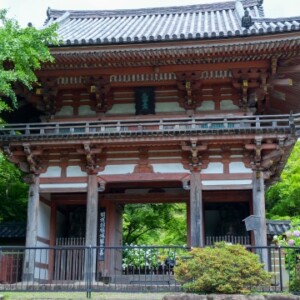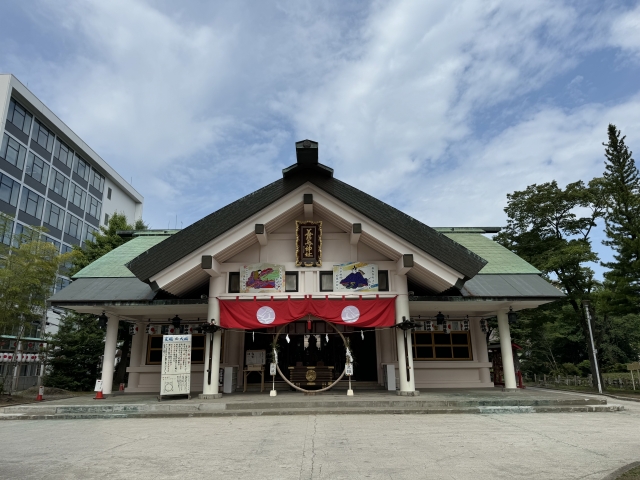
Zenchidori Shrine|Complete guide to the history, highlights, and worship information of this historic shrine
Zenchidori Shrine, quietly located in the center of Aomori City, is a historic shrine that continues to be deeply loved by the local people as the “birthplace of Aomori City. The shrine enshrines the three Munakata Goddesses, known as the gods of the sea, and attracts many worshippers seeking blessings for family safety, traffic safety, and prosperous business. The mysterious Ryujinsui (dragon goddess water) that wells up within the shrine grounds has long been worshipped as a power spot, and is still popular among many people today.
Outline and basic information about Zenchidori Shrine
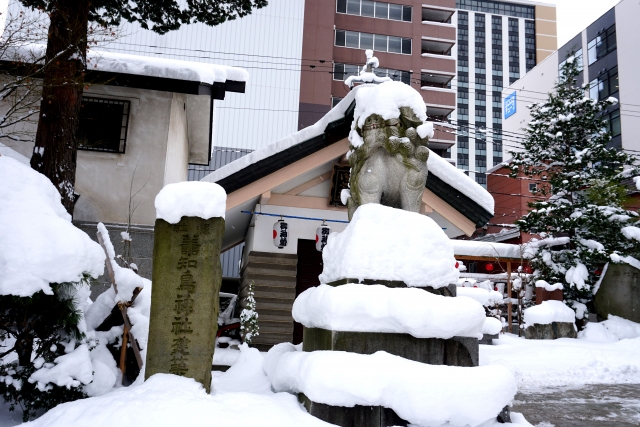
Zenchidori Shrine is located in Yasukata, Aomori City, Aomori Prefecture, and is the center of local faith as Aomori’s chief town guardian. The name “Uto-jinja” is derived from the seabird Zenchidori. Even today, the shrine can be visited 24 hours a day, and while it is a familiar place of daily prayer for the local people, it is also one of the representative shrines of Aomori Prefecture, attracting many visitors from outside the prefecture.
History and Origin
There is a long-standing legend about the founding of Zenchidori Shrine. It is said that during the reign of Emperor Munkyo, a man named Zentsuchidori Chunagon Yasukata, who received imperial instructions, came to live in Sotogahama in Mutsu Province and built a shrine to worship the three Munakata Goddesses, the sons of Amaterasu, the Great Goddess of the Sun. During this period, present-day Aomori City was called Zenchidori Village.
What is interesting is the origin of the name Zentshidori. After Zenchidori Chunagon Yasukata died, an unfamiliar bird flew in from nowhere, and when the parent bird chirped “utou,” the baby bird chirped “yasukata. People believed that this bird was the spirit of Zenchidori Chunagon transformed, and the name “Zenchidori” was given to the bird.
In 807 (Daido 2), the shrine was rebuilt by Tamuramaro Sakagami, and since then it has been revered by lords of various periods. During the Edo period (1603-1867), the shrine was under the jurisdiction of the Hirosaki domain and was regarded as an important shrine in the Tsugaru region.
Gods and Benefits
The main deities of Zenchidori Shrine are the three Munakata Goddesses. These three goddesses, Ichikishimahime-no-mikoto, Manitsuhime-no-mikoto, and Takirihime-no-mikoto, are known as the gods of the sea and of safe navigation. These goddesses are also called “Michi-no-Mikoto” and are worshipped as gods who govern all paths.
Other deities enshrined at the shrine include Kurainatama-no-Mikoto, Miyahi-no-Mikoto, Sarutahiko-no-Mikoto, and Kaizumi-no-Omikami, who are believed to bestow a wide variety of blessings. The main benefits include safety in the home, traffic safety, prosperous business, protection of the fishing industry, and protection from the direction of the sea.
In particular, because of Aomori’s location facing the sea, people involved in the fishing industry and maritime businesses are especially faithful to the shrine, and many people visit the shrine to pray for safe voyages and a big catch. In modern times, many visitors come to the shrine to pray for traffic safety.
Highlights and Features of Zenchidori Shrine
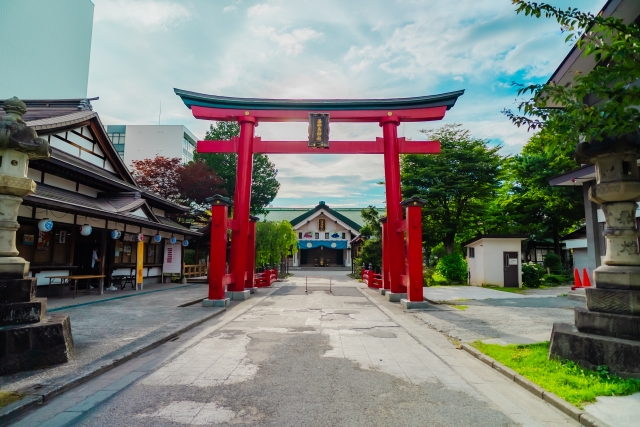
Despite its location in the center of Aomori City, Zentshidori Shrine is surrounded by lush greenery and a tranquil atmosphere. The shrine grounds are a special place where historical buildings and beautiful nature are in harmony, making visitors forget that they are in an urban area. The shrine is also dotted with many attractions, including the Ryujinsui (Dragon God Water), known as a power spot.
Architectural and Structural Attractions
The current shrine pavilion of Zenchidori Shrine was reconstructed in 1955 (Showa 30), and conveys the beauty of traditional shrine architecture to the present day. The hall of worship has an imposing appearance, and a curtain of Tsugaru peonies hangs from the top, testifying to the history of the Hirosaki Domain period.
In addition to the main shrine, several other shrines are located within the precincts of the shrine. The Ryujinmiya Shrine is believed to bring prosperity to the fishing industry, and the Sanko Inari Shrine is popular among those wishing for prosperous business. Benzaiten Shrine is believed to be the god of music, entertainment, and wealth, and is identified with Ichikishimahime-no-mikoto, one of the three goddesses of Munakata.
The shrine office and awarding office are well maintained, and visitors are carefully attended to. The shrine’s precincts are arranged in such a way that worshippers can visit various parts of the shrine in a natural flow, creating a tranquil environment for worship.
Nature and scenic beauty
Within the precincts of the temple, there is a swamp that is a remnant of a large lake that once existed, creating a solemn atmosphere that evokes a sense of history. This swamp is called “Utounuma” and was once called Yasukata. Although it is now smaller, it is an interesting place that evokes a connection with the name of Zenchidori Chunagon Yasukata.
Abundant water flows ceaselessly in the hand-watering basin, and the sound of the water brings a sense of freshness to the temple grounds. In summer, water lilies bloom beautifully, delighting the eyes of visitors. Carp swim in the pond on the temple grounds, allowing visitors to feel close to the workings of nature.
The greenery surrounding the shrine is abundant even though it is located in the center of Aomori City, and shows its beauty in each of the four seasons. Especially during the season of fresh greenery and autumn foliage, the entire shrine grounds are enveloped in the beauty of nature, offering deep healing to visitors. The temple grounds are surrounded by tranquility, providing a precious space for visitors to calm their minds away from the hustle and bustle of the urban area.
The special power spot “Ryujinsui” (Dragon God’s Water)
One of the most notable attractions at Zentshidori Shrine is the “Ryujinsui” spring water located behind the worship hall. It is currently the only water vein that flows into the Zentsuchidori Swamp, and has long been worshipped by people whose work or business is related to water or the sea, and is also known as a power spot from which benefits spring forth.
People who work or do business related to the sea or water have taken the water from this place and sprinkled it or drank it for the purpose of prosperity, safety, and to ward off misfortune. A magnificent statue of a dragon is set up at the site of the Dragon God’s water, and clear water gushes out of its mouth without ceasing.
This Ryujinsui is not just a tourist attraction, but a special place that is familiar to the locals on a daily basis. Many locals can be seen visiting the area to draw water, indicating that the belief in the water has been passed down from generation to generation until the present day. The water is cold and tasty, and drinking it gives a sense of purification to both body and soul.
The area around Ryujinsui is particularly mysterious, and many worshippers say they have had special experiences here. Its reputation as a power spot is well known outside the prefecture, and many visitors come from far and wide.
Guide to Worship and Visiting
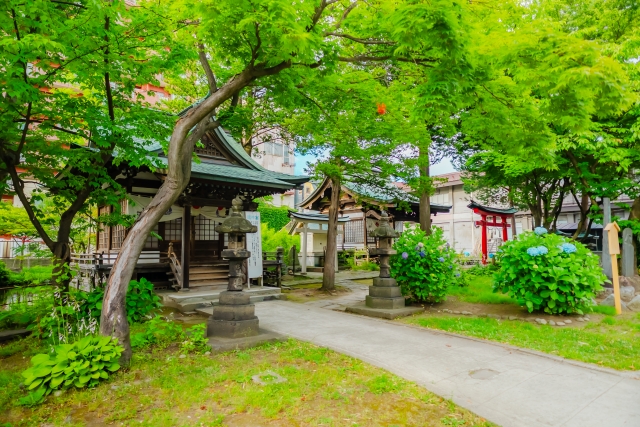
Zenchidori Shrine is open 24 hours a day, welcoming visitors at any time of the day. It is a place of daily prayer for the local people and a peaceful environment for visitors. Various events are held throughout the four seasons, allowing visitors to experience the charm of the shrine according to each season.
Worship Etiquette and Manners
Worship at Zenchidori Shrine is conducted in the same manner as at most Shinto shrines. First, bow when passing through the torii gate, and walk down the approach to the shrine avoiding the center of the path. At the hand-watering basin, purify your left hand, then your right, and rinse out your mouth to purify yourself before going to the shrine for worship.
At the hall of worship, you should bow in the manner of “ni-ai ni clap-toe ichi-ai” (two claps for one prayer). After making a monetary offering, bow deeply twice, clap your hands together twice, and bow deeply at the end. When you visit the shrine, pray with gratitude for the daily blessings.
It is important to maintain quietness in the precincts of the shrine and to remember to be considerate of other visitors. When drawing dragon god water, show consideration for the locals and use the water in the proper order. Photography is generally allowed, but care should be taken not to disturb other worshippers or the ritual.
Annual and Seasonal Events
Various festivals and events are held throughout the year at Zenchidori Shrine. One of the most important events is the annual festival, when the local community comes together to celebrate the shrine. In spring, along with the cherry blossom season, the shrine is filled with a special atmosphere and attracts many worshippers.
In summer, the Ryujin Matsuri is held and the shrine grounds come alive with a special energy. Yoimiya is also held during this time, providing a rare opportunity to experience the traditional culture of the community. In autumn, many families visit the shrine for the Shichi-Go-San Festival, and the precincts of the shrine become festive with children dressed in their best clothes.
In winter, the snow-covered precincts are beautiful, and the quietness of the temple grounds makes the visit a special experience. During the year-end and New Year’s holidays, the shrine is crowded with visitors for Hatsumode (New Year’s visit), who pray for a safe and happy new year. Purification events such as Natsukoshi Grand Purification are also held regularly and are popular among worshippers seeking to purify their bodies and souls.
Red Seal and Good Luck Charm Information
Zenchidori Shrine offers beautiful red seals, which are popular among red seal collectors. The red seal is available from 8:30 a.m. to 5:00 p.m., and the initial fee is 500 yen. During busy seasons, such as New Year’s, the shrine may only accept a written request for red seals, so it is recommended that you check in advance.
The amulet has a cute design with a Zenchidori bird and is popular for its blessings for safety on the road. In addition to amulets for traffic safety, there are amulets for various wishes, such as family safety, business prosperity, and academic success.
Various kinds of ema (votive picture tablet) and omikuji (omikuji fortune) are also available, and are popular with many visitors as souvenirs of their visit to the shrine. For those whose work is related to the sea or water, the amulets associated with Ryujinsui are especially popular. For more information on the items awarded, please ask at the shrine office when you visit the shrine.
Access/Use Information
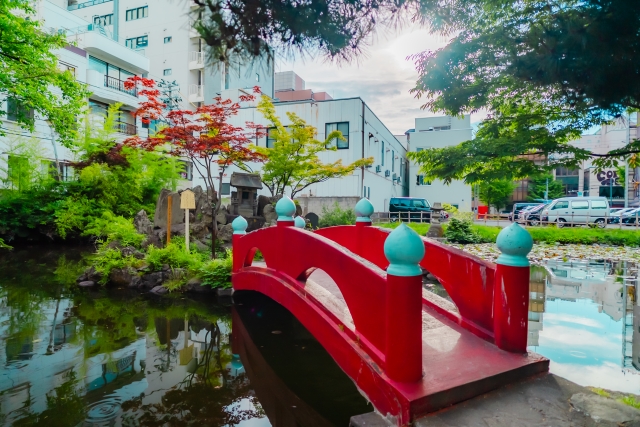
Zenchidori Shrine is located in the center of Aomori City, within walking distance of JR Aomori Station, making it a very accessible shrine. It is also close to ASPAM, one of Aomori Prefecture’s most popular tourist attractions, making it a convenient location to stop by when sightseeing in Aomori. Whether you use public transportation or access by private vehicle, it is convenient for both.
Transportation Access
When using public transportation, JR Aomori Station is the nearest station. From Aomori Station, it is approximately a 10-minute walk to Zenchidori Shrine, which is located on Shinmachi Street on the way toward the Prefectural Museum of History. Aomori Station is served by the Shinkansen bullet train and local train lines, making it easily accessible from outside the prefecture.
From Aomori Airport, it takes about 30 minutes by car, or if using a bus, you can walk after leaving for Aomori Station. From other parts of Honshu, the most convenient route is to take the Tohoku Expressway and exit at the Aomori Chuo Interchange toward the city center.
The city’s major tourist attractions are also accessible on foot, with ASPAM about a 7 or 8 minute walk away, and the Aomori Prefectural Museum of History and Aomori City Cultural Hall nearby. It is also close to the site of the Aomori Nebuta Festival, making it a convenient location for worship during the festival.
<Address> 2-7-18 Yasukata, Aomori-shi, Aomori, 030-0803 Japan
Hours of Admission, Fees, and Parking Information
Zenchidori Shrine is open 24 hours a day, and visitors are free to visit even early in the morning or late at night. However, the awarding office is open from 9:00 a.m. to 5:00 p.m., so you must visit during these hours if you wish to obtain a red seal or amulet.
No fee is required to visit the shrine, and anyone is free to enter the premises. Prayer requests start at 6,000 yen and are accepted from 9:00 a.m. to 4:00 p.m. (all year round). Visitors wishing to pray must arrive at the reception desk at least 15 minutes prior to the start of the service. In January, reservations are required, so please inquire in advance.
Parking is available at the parking lot “Parking Zenchidori” next to the shrine. Parking for large buses is also available, but advance reservations are required. Since the parking lot is located in the center of the city, the number of parking spaces is limited, so public transportation is also recommended. There are several coin-operated parking lots in the vicinity, so you can choose according to the situation.
Reference site
Official website of Zenchidori Shrine: https://utojinja.sakura.ne.jp/
Aomori Prefecture Tourism Information Site Amazing AOMORI: https://aomori-tourism.com/spot/detail_3470.html



